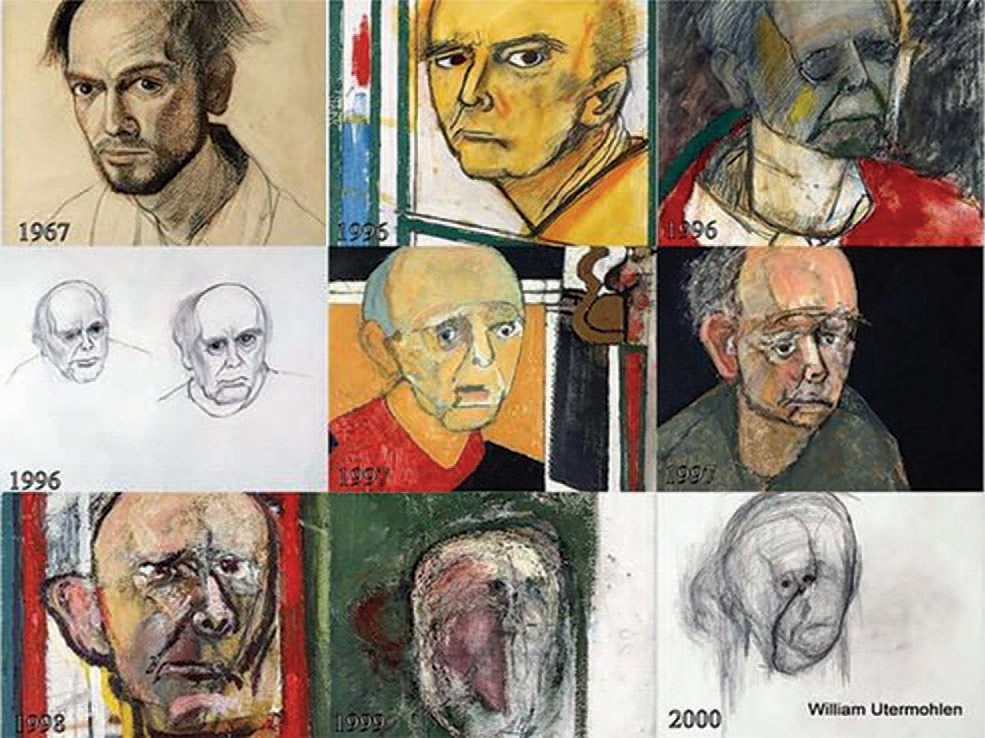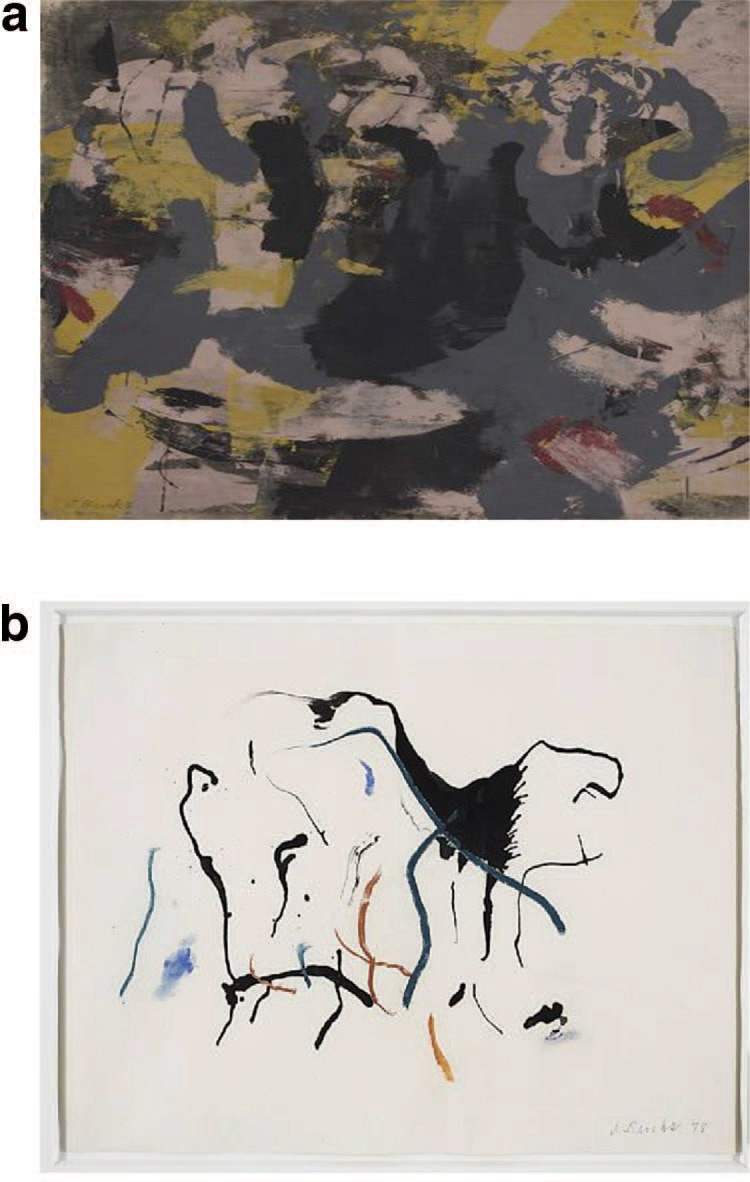In the paintings of famous artists formalized signs of senile dementia

Self-portraits of William Utermolen, made in the years 1967-2000. Alzheimer's disease was diagnosed to the master in 1995
Scientists from the University of Liverpool are confident that the paintings of some masters of artistic art are not just masterpieces of painting, but also the history of diseases. Over the years, the style of artists is changing. It is particularly changing in those diagnosed with Alzheimer's disease and Parkinson's disease. These subtle changes in style are a sign of dementia, that is, neurodegenerative diseases (NDD), referred to as senile dementia.
According to scientists, certain changes in the style of artistic writing are amenable to formalization. Thus, people with NDD can be identified by changing their patterns over time. Just as patients are now identified by changes in speech (see analysis of age-related degradation in a speech by President Ronald Reagan , who suffered from dementia, as well as some other age-related policies).
Alzheimer's disease, Pick's disease, and a dozen other neurodegenerative diseases are the scourge of the modern era, when modern medicine has supported life in aging citizens for decades. But doctors have not yet learned how to reverse the progressive death of nerve cells in old age, which leads to various neurological symptoms.
')
As a rule, the first symptoms of Alzheimer's disease occur after 65 years. It all begins with mild cognitive impairment: it is forgetfulness, difficulty in determining time, deterioration of social and professional activity, self-centeredness, subdepressive reactions to one's own inconsistency, delusional disorders, etc. At the first stage, patients are still trying to somehow correct their own behavior, but then their condition worsens. A reduction in the level of judgment is clearly expressed, speech slows down, the interests of patients are limited. In the end, comes the complete disintegration of memory and the disintegration of speech.
Alzheimer's disease (60-70% of cases of dementia) was first described in 1906 , but with an increase in life expectancy, the detectability and the number of victims is rapidly increasing. In 2015, approximately 47.5 million people in the world suffered from dementia.
There is no cure, although certain genetic factors associated with the disease are known, so there is still hope for a search for a cure.
Scientists from the University of Liverpool conducted a fractal analysis of neurological changes in the technique of writing seven artists. However, on the example of some artists, their conclusion is obvious without any fractal analysis. Just look at the pictures. For example, see the above self-portraits of William Utermolen, made in the years 1967-2000. The diagnosis of Alzheimer's disease was made to the master in 1995.
William Uthermolen - one of several artists who were not fortunate enough to encounter NDZ. Scientists have taken to analyze the picture of four celebrities with the following diagnosis: Salvador Dali, James Brooks, Norval Morissot and Willem de Kooning.

Paintings by James Brooks "Doubt" (1950) and "Untitled" (1978)
An analysis of three healthy artists was also carried out: Pablo Picasso, Claude Monet and Marc Chagall, for comparison. A fractal analysis of age-related changes in brush strokes of artists suffering from NDZ was conducted, compared with age-related changes in brush strokes of healthy artists. Scientists have identified not only the determining difference in their style, but also some signs that can serve as early indicators of NDD.
A total of 2092 works by seven artists were taken for research. Fractal analysis revealed complex geometric shapes of the strokes of each of them. These are peculiar "prints" that allow you to confidently identify a particular artist. Fractal analysis of brush strokes and used to determine the authenticity of paintings.
The result of the study is shown in the illustration. On the left - age-related changes in the fractal measurement of smears from healthy artists (control group). In the center is the change in fractal measurement with age of artists suffering from Alzheimer's disease (James Brooks, Willem de Kooning). On the right - the change in fractal measurement with age among artists suffering from Parkinson's disease (Salvador Dali, Norval Morisso).

Changes under the influence of Parkinson's disease and Alzheimer's disease are clearly visible with age, and they were visible long before the artists were actually diagnosed with neurodegenerative diseases.
An ordinary person begins to deteriorate the memory and slow down his speech, while the artist long before that brush strokes begin to change slightly. For these talents, painting is a kind of means of expression, it is their speech. That is why changes in brain activity are primarily manifested in the pictures.
If you believe the charts, the artists can predict the onset of senile Alzheimer's disease in almost 30-40 years.
Perhaps the fractal analysis will allow to determine the signs of Alzheimer's disease in some contemporary artists who might not suspect that they will soon have the first symptom of senile dementia. So they can prepare for the inevitable consequences.
Hopefully, science will automatically detect signs of senile dementia in other data — in source code patterns, in fiction, in typing speed on a keyboard, etc. Then the monitoring program can be installed on the computer, work as before and just wait for the information message.
The scientific article was published in December 2016 in the journal Neuropsychology (doi: 10.1037 / neu0000303).
Source: https://habr.com/ru/post/400481/
All Articles